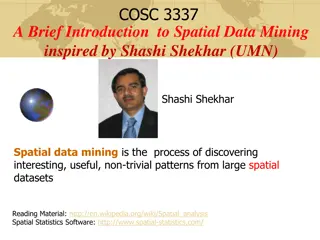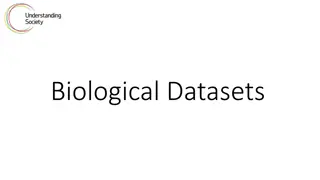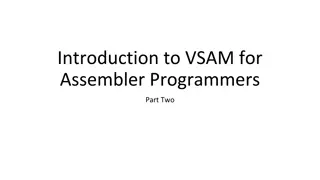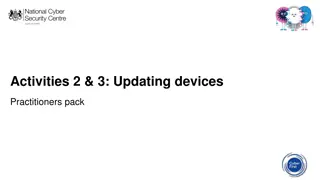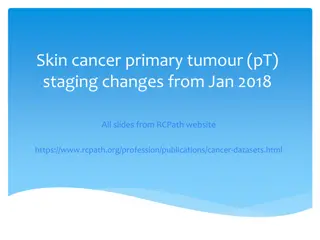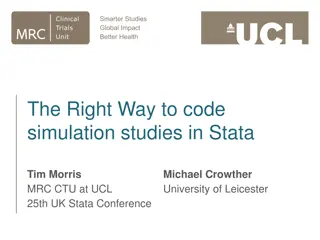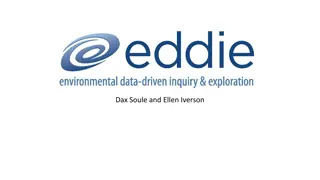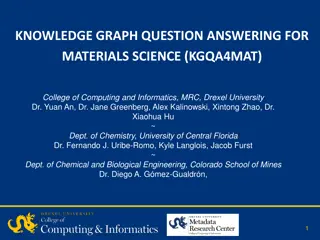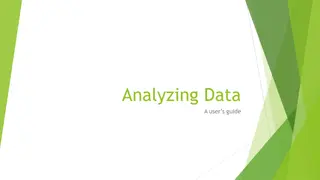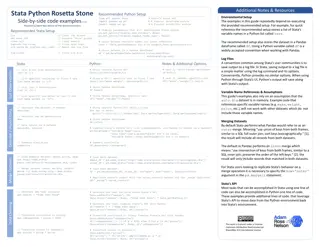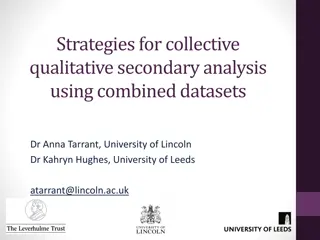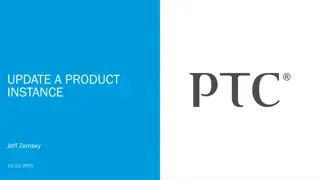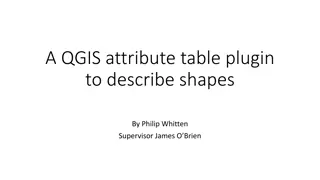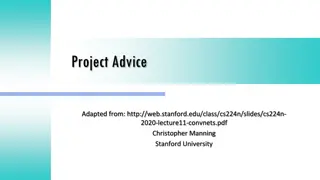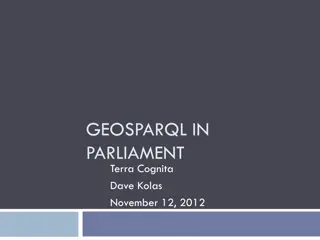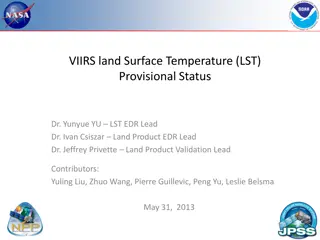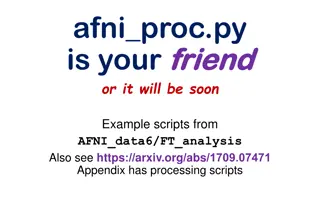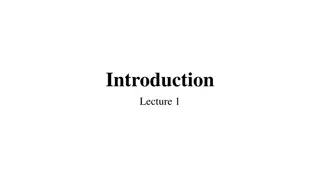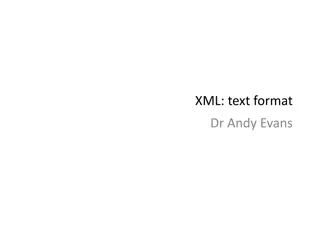Updating GML datasets
Specification and approaches for updating GML datasets, including attribute-level and object-level updates, text-based and XML-aware patching, and whole-dataset replacement. Analysis of factors like robustness, update volume, tools, and implementation effort.
Download Presentation

Please find below an Image/Link to download the presentation.
The content on the website is provided AS IS for your information and personal use only. It may not be sold, licensed, or shared on other websites without obtaining consent from the author.If you encounter any issues during the download, it is possible that the publisher has removed the file from their server.
You are allowed to download the files provided on this website for personal or commercial use, subject to the condition that they are used lawfully. All files are the property of their respective owners.
The content on the website is provided AS IS for your information and personal use only. It may not be sold, licensed, or shared on other websites without obtaining consent from the author.
E N D
Presentation Transcript
Updating GML datasets S-100 WG TSM5 19-21 September 2017 Raphael Malyankar, Consultant, Portolan Sciences Eivind Mong, Consultant Work performed under NOAA sponsorship
Introduction The GML specification does not specify any particular format for updates to GML data files. Drafts of S-122 and S-123 define a whole-object- replacement approach to updating datasets. At NIPWG 4 in May 2017, we were requested to write up the S-122/S-123 approach for the S-100 WG.
Options for updating GML datasets Attribute-level update update delta dataset describes updates to attributes as well as instances. Object-level update update delta dataset describes updates only at the instance level. Plain text update: Update with a text-based patch utility update is a purely text-based delta between the current and updated dataset that ignores structure and semantics. XML-aware patching update is an XML-based delta that identifies the XML item (attribute or instance) being updated. Whole-dataset replacement the entire dataset is distributed when an update is necessary.
Summarized Analysis 1 Factor/Approach Attribute-level Update detail Object-level Instance, spatial object Text patch Line-based XML patch Attribute, instance, spatial object, spatial primitive Special common XML schema Like Attribute-level. Whole-dataset Dataset as a whole Attribute, instance, spatial object, spatial primitive Modified Same as base dataset More flexible Not needed Same as base dataset Robust Schema Flexible Least flexible Robustness 10 X attribute level? Volume of update delta Low Comparable to Attribute level Comparable to Attribute-level 100 X attribute level? Tools - availability OEMs must develop. OEMs must develop. Off-the-shelf plus custom wrappers Uncertain. Open source tools exist, customization may be needed. Moderate No special functionality Implementation effort Application logic Application logic Highest Low Low Low Simpler parts of 8211 logic None for basic implementation. Error recovery TBD Simple logic for basic implementation. Error recovery TBD Simplest like 8211 format. Reusable Reusable Re-usable Reusable Reusable Sotware re-use
Summarized Analysis - 2 Factor/Approach Attribute-level Update tracking and object history on end- user system Does updating spatial type need special treatment? Object-level Simplest Text patch Most complex XML patch Comparable to Attribute-level Whole-dataset Difficult unless a dataset contains only a single feature. More complex Depends on text structure Whole primitive; updating single coordinate more complex As object; update to single coordinate more complex Minimal As object; update to single coordinate more complex No special treatment Previous version requirements producer & end-user Transfer format Minimal Previous version needed Minimal Not needed File Compatible with web services Vector and/or info type File Compatible with web services Vector and/or info type File Not compatible with web services Vector and/or info type File Low compatibility with web services. Vector and/or info type As for base dataset Data product types Vector and/or info type and imagery, etc. Yes Compatibility with GML 3.2.1 Possible Yes Yes - ignores GML altogether. Yes update format is non-GML can reference items in any GML file. A more detailed version of this table is included in the paper.
Recommended methods Object-level updating for products based on discrete features or information types, with two caveats: Products where datasets are very small will generally need only whole-dataset methods; and Data or coordinate collections or sequences will need special treatment (e.g., functionality extensions to locate coordinates by their positions in the sequence) in order to reduce the average data volume of updates. Whole-dataset updating for imagery, gridded data, etc., with the caveat below: Methods for updating parts of gridded or pointset data in other formats should be adapted to GML encodings. Specific products may have exceptional circumstances
Details Specific details for adding whole-object update formats to a product specification are described in the paper (pages 5-10). For example: Feature ID and gml:id of updated feature must be the same as the original. Versioning of features add equivalent of RVER in S-100 GML profile. Deletions use fixedDateRange attribute. Loading requires all previous updates to be available (or applied). Cancelling datasets update with edition # = 0. Update cannot change data coverage. Validation checks for (1) updates in isolation and (2) datasets after updating. Metadata for update datasets.
Conclusion The whole-object approach is a reasonable compromise between the various factors for most discrete-feature vector datasets. Specific data products might have special circumstances which dictate a different approach. Suggested next steps: Evaluate the most promising approaches. Develop specifications, rules, or guidelines about update dataset format, processing, and management, for eventual incorporation into S-100. Develop supporting guidance for authors of product specifications and implementers.


